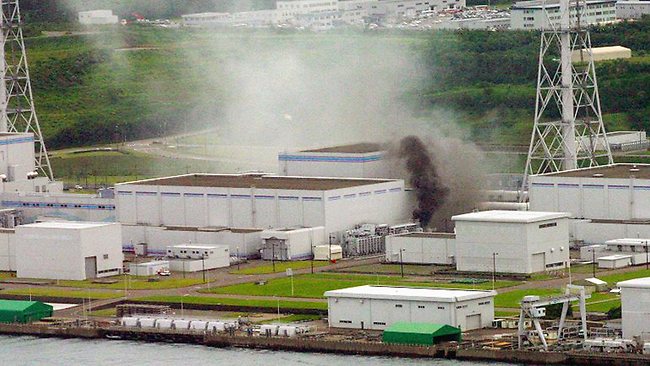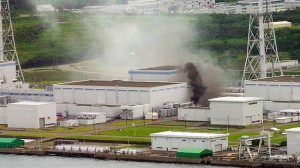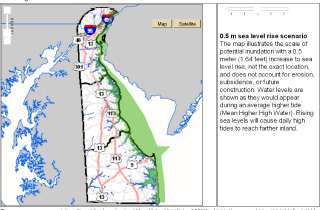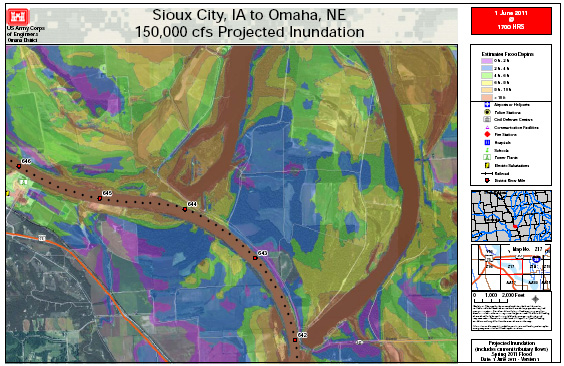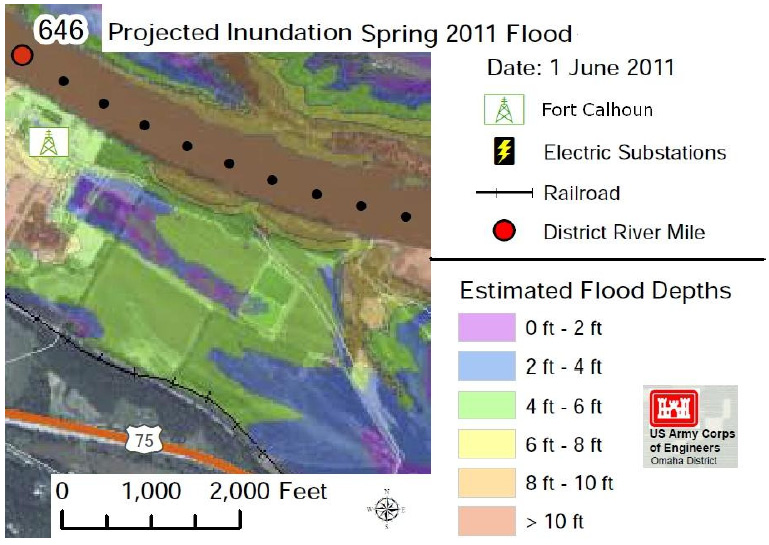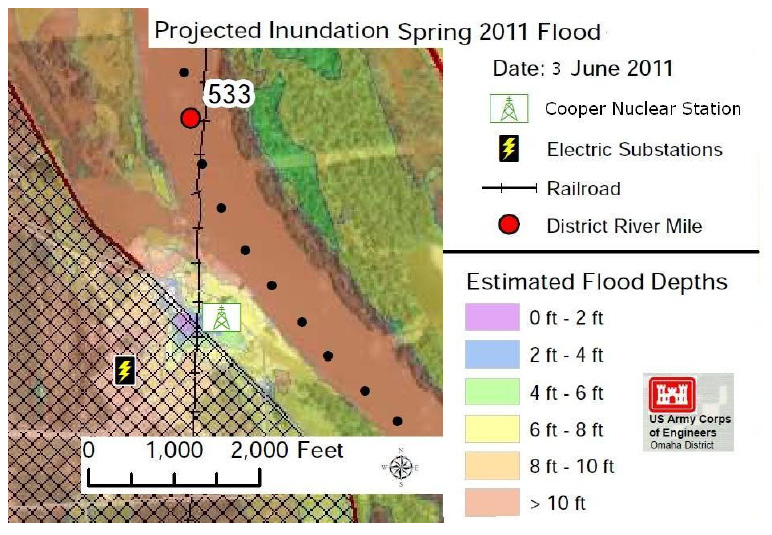One year after Fukushima Daiichi meltdown
March 10th, 2012
I live in Red Wing, home to two nuclear reactors. This week I hope you all will take some time to reflect on the mess at Fukushima Daiichi and the role of nuclear generators in our energy scheme. It was a year ago today when Fukushima Daiichi reactors melted down.
When Fukushima Daiichi first blew up, I spent some time tracking down every shred of info, which wasn’t much. That there was so little information available was startling, and that was emphasized by my blog stats which showed 4,00o+ hits in just one day, people trying desperately to find out what was going on.
For an overview of how difficult it was to get information, and the struggles of even NRC personnel, from Marketplace earlier this week:
From the New York Times:
The Wiki is packed with info:
Here’s what I’d posted then:
Another Allis nuclear plant
March 8th, 2012
Alan’s been digging around looking at the old nuclear demonstration plants, particularly since my father worked on the Elk River plant in Minnesota, now decommissioned. and lo and behold, Genoa is/was another Allis-Chalmers nuclear plant, although it’s a different branch of the family:
How bizarre…
And now for something a little more current:
Don’t forget that our Monticello GE reactor is similar to Fukushima reactors. Enough about upgrades – SHUT THEM DOWN!
Boyd puts out nuclear welcome mat
December 22nd, 2011
AAAAARGH, there goes PUC Commissioner (former chair) David Boyd putting out the welcome mat for nuclear power, nuclear plants and nuclear waste. This we DON’T need…
And note that he’s claiming that the hurdles are “costs” and “public perceptions.” Ummmm… where’s safety? Minnesota is home to a Fukushima Dai-ichi GE nuclear reactor, located in Monticello, north, upriver and upwind from the metro.
Safety, anyone? But then, I’ve been to the Appellate Court about the responsibility of the PUC for assuring that the utilities provide “safe” electricity, and we were tossed out. Power Line Task Force v. Public Utilities Commission
THE HURDLES OF COSTS AND PUBLIC PERCEPTIONS
Published In: EnergyBiz Magazine November / December 2011
David Boyd
THE FUTURE OF THE U.S. ELECTRICITY PORTFOLIO is a complex matter that asks the industry to find a path forward that acceptably balances many different factors. Once one acknowledges that every generating technology carries physical, financial and environmental risks, the conversation can begin in an intellectually honest manner. In the case of the nuclear industry, the issues frequently discussed are the costs of new construction, safety and fuel management.
Why would a utility consider nuclear power when public opinion on the risks and rewards appears to swing more significantly than it does for other technologies? A response requires taking stock of the broader situation as it stands today, and then focusing on the nuclear industry specifically.
We are entering a period where utilities will retool their generation fleets for the next 40 or more years. Construction will need to be phased over time, and the optimum portfolio could change with the passage of time. Policy drivers of this build-out include electricity that is reasonably priced, increasingly low carbon and as clean as possible, together with North American Electric Reliability Corp. and Federal Energy Regulatory Commission mandates for reliability. In addition, the evolving domestic gas supply, economics and the anticipated U.S. Environmental Protection Agency mandates dictate that coal use will be reduced in the near term. Some argue that this translates into a natural-gas dominated electricity sector. While I accept a movement to natural gas in the near term, that fuel will not yield the complete decarbonization of the electricity sector necessary to meet, for example, the goal to reduce total greenhouse gas emissions to 80 percent below 2005 levels by 2050, as per a Minnesota statute, among other state and federal guidelines. While we have made significant progress with wind and other renewables that support the greenhouse gas targets, questions remain regarding the cost and reliability of integrating very large quantities of renewable energy into the grid.
So is there is a place for new nuclear in our generation fleet? Advocates suggest that the answer is yes, with careful consideration of specific issues. Aside from hydro, nuclear plants are the only low- or no-carbon baseload option of significant scale for many states. Nuclear is also a part of a balanced generation portfolio that is prized by many – but at what cost, at what scale and under what circumstances? If the goal is to maintain the present 20 percent of electricity generation from nuclear, we will need to replace 40 reactors whose operating licenses expire by 2030.
There are a number of hurdles that remain for expansion of nuclear power in the United States. Chief among these is the capital cost of construction. Despite projections that the levelized cost of electricity from newly constructed plants will be competitive with other generating technologies, the project costs are so high that most utilities would be betting their futures by pursuing a new reactor. In addition, the first movers would need to develop new institutional knowledge and confront the preparedness of our domestic workforce. This could add significant costs, even though the effect would benefit those who might follow. Although the federal government has authorized loan guarantees to help overcome these barriers, they are significant issues that limit early movers in the industry.
Secondly, the federal obligation to take possession of spent fuel and place it in a repository, as dictated by the Nuclear Waste Policy Act and standing contracts with the utilities, has not been fulfilled, and this inaction adds to uncertainty. The Blue Ribbon Commission on America’s Nuclear Future has proposed policy actions to address this issue. Even with swift acceptance of the commission recommendations, it may be 12 years before any spent fuel begins to move from present storage sites. Furthermore, there remain matters of active litigation over the suspension of licensing activities for Yucca Mountain, and disputes over the Nuclear Waste Fund fees.
Fukushima admittedly a mess…
August 9th, 2011
… to put it mildly.
I’ve posted a few things about the Fukushima nuclear disaster:
And it’s just so depressing to read about this, but here we go again, finally some admission that yes, it is really that bad. From the Washington Post:
Japanese scientist: Fukushima meltdown occurred within hours of quake
Well, DUH! A choice paragraph from that article:
From the Mainichi Daily News:
And from the Voice of America:
The International Atomic Agency’s most recent post was as of June 2:
adsf
Fukushima can’t happen here? Uh-huh… right…
June 6th, 2011
I’ve gotten a few emails questioning raising issues about our own GE nuclear reactors, like at Monticello, and they always note, “it can’t happen here.” Anyone who knows anything about nuclear knows better… and as one living in a “nuclear” community, two reactors here in Red Wing, and three in Salem, NJ, right across the river from Port Penn, I know too well the risks. Floods happen. Hurricanes happen. Salem and Hope Creek are built on a manufactured sand “island” on the Delaware River just up a tad from the Atlantic Ocean, up just enough to suck in the fresh water (and lots of fish), and close enough to be history as the sea continues to rise:
Well, folks we have a situation… the U.S. Army Corps of Engineers is releasing a lot of water from dams along the Missouri River backed up with too much rainfall, and they’ve started to evacuate parts of North Dakota, and it’ll affect South Dakota and Nebraska too.
The U.S. Army Corps of Engineers has a site: Flood Resources
Here are the “Inundation Maps”
On the Sioux City, IA to Omaha, NE link, check out map Z17 and look way over in the right side for the Ft. Calhoun nuclear plant (yes, there is something in Ft. Calhoun in addition to the legendary “Ft. Calhoun Interface.”), and compare with the maps below that focus on the plants — it’s hard to miss the placement of these “critical” plants in hard to find places:
From Roger Herried today:
As a result of one of the wettest winters in over 100 years the Missouri River is threatening 6 dams that were put in place over the last 60 years to reduce annual flooding on the Missouri’s floodplain which averages between 10-20 miles across. When the area of concern was first settled by Europeans, they built their towns and farms in the fertile plain because it contained the best soil to grow food. In 1889, there was a wet year that filled the entire floodplain with a torrent that lasted for weeks. All towns and farms on the plain were washed away. The only thing left of my home town of Vermillion SD. were a few big concrete blocks of the local church. The next time they rebuilt was not on the flood plain but on the bluffs overlooking the Missouri.
Starting in the 1960’s the US Corps of Engineers constructed 6 dams on the Missouri River, the last of the six being located near Yankton SD called Gavins Point Dam. With the dams in place, everybody went back to putting farms and guess what, two nuclear power plants on the flood plain. Due to the extreme winter including major rains in May the Corp of Engineers has announced that it will be forced to release 150,000 cubic feet of water per second throughout much of June. This is five times more water than the Corp has ever had to release before, and the rainy season has not ended yet. They are suggesting that these levels will continue for much of June.
The Corps of Engineers has just released a set of projected flood maps for the area from Yankton SD throughout Nebraska showing what they think will happen in terms of controlled flood levels in the region. Based on these maps both of Nebraska’s nuclear facilities are in severe danger with the Fort Calhoun unit located 19 miles north of Omaha Nebraska and projected to be under water from 4 to over 10 feet of water (see map below). Note that in May of this year, the NRC hit Ft. Calhoun for poor flood control problems from flooding that took place last year. The facility is a 500 MegaWatt Combustion Engineering PWR reactor that is currently shut down.
The other reactor the Cooper nuclear station is located 23 miles south of Omaha and is an 830 MWe GE Mark 4 reactor and is currently at full operation. It is predicted to be under water from 4-8 feet. Behind the reactor and to the Northwest are located levees that are meant to keep at least reduce flooding by 2 feet.
Here are two maps sent by Roger Herried that identify and focus on the Ft. Calhoon and Cooper Nuclear Station nuclear generating plants:
